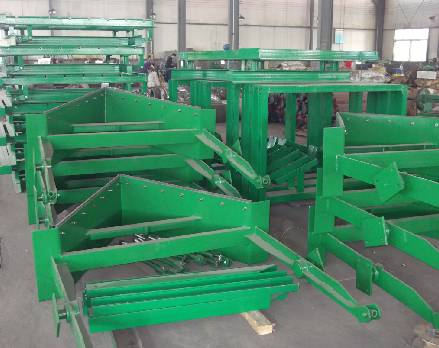 Afrikaans
Afrikaans  Albanian
Albanian  Amharic
Amharic  Arabic
Arabic  Armenian
Armenian  Azerbaijani
Azerbaijani  Basque
Basque  Belarusian
Belarusian  Bengali
Bengali  Bosnian
Bosnian  Bulgarian
Bulgarian  Catalan
Catalan  Cebuano
Cebuano  Corsican
Corsican  Croatian
Croatian  Czech
Czech  Danish
Danish  Dutch
Dutch  English
English  Esperanto
Esperanto  Estonian
Estonian  Finnish
Finnish  French
French  Frisian
Frisian  Galician
Galician  Georgian
Georgian  German
German  Greek
Greek  Gujarati
Gujarati  Haitian Creole
Haitian Creole  hausa
hausa  hawaiian
hawaiian  Hebrew
Hebrew  Hindi
Hindi  Miao
Miao  Hungarian
Hungarian  Icelandic
Icelandic  igbo
igbo  Indonesian
Indonesian  irish
irish  Italian
Italian  Japanese
Japanese  Javanese
Javanese  Kannada
Kannada  kazakh
kazakh  Khmer
Khmer  Rwandese
Rwandese  Korean
Korean  Kurdish
Kurdish  Kyrgyz
Kyrgyz  Lao
Lao  Latin
Latin  Latvian
Latvian  Lithuanian
Lithuanian  Luxembourgish
Luxembourgish  Macedonian
Macedonian  Malgashi
Malgashi  Malay
Malay  Malayalam
Malayalam  Maltese
Maltese  Maori
Maori  Marathi
Marathi  Mongolian
Mongolian  Myanmar
Myanmar  Nepali
Nepali  Norwegian
Norwegian  Norwegian
Norwegian  Occitan
Occitan  Pashto
Pashto  Persian
Persian  Polish
Polish  Portuguese
Portuguese  Punjabi
Punjabi  Romanian
Romanian  Russian
Russian  Samoan
Samoan  Scottish Gaelic
Scottish Gaelic  Serbian
Serbian  Sesotho
Sesotho  Shona
Shona  Sindhi
Sindhi  Sinhala
Sinhala  Slovak
Slovak  Slovenian
Slovenian  Somali
Somali  Spanish
Spanish  Sundanese
Sundanese  Swahili
Swahili  Swedish
Swedish  Tagalog
Tagalog  Tajik
Tajik  Tamil
Tamil  Tatar
Tatar  Telugu
Telugu  Thai
Thai  Turkish
Turkish  Turkmen
Turkmen  Ukrainian
Ukrainian  Urdu
Urdu  Uighur
Uighur  Uzbek
Uzbek  Vietnamese
Vietnamese  Welsh
Welsh  Bantu
Bantu  Yiddish
Yiddish  Yoruba
Yoruba  Zulu
Zulu Essential Components and Accessories for Roller Conveyor Systems in Industrial Applications
Understanding Roller Conveyor Parts A Comprehensive Overview
Roller conveyors are an essential component of modern material handling systems, widely utilized in various industries such as manufacturing, distribution, and warehousing. These systems offer efficient transportation of goods, minimizing human workload and increasing productivity. To understand how roller conveyors work, it’s crucial to delve into their key parts and components.
1. Rollers
At the heart of any roller conveyor system are the rollers. These cylindrical components enable the movement of goods along the conveyor. The design of the rollers can vary widely, influencing the conveyance process. Common types include gravity rollers, which rely on gravity to move items, and powered rollers that utilize electric motors. The choice of roller material—often made from steel, plastic, or aluminum—depends on the nature of the items being transported and the environment in which the conveyor operates.
2. Frames
The frame serves as the integral support structure for the conveyor. It not only holds the rollers in place but also provides stability to the entire system. Typically made from sturdy materials like steel or aluminum, frames are designed to withstand significant weight and stress, ensuring safe and efficient operation. The design of the frame varies based on the intended application, with some being adjustable to accommodate different conveyor heights.
3. Drive Mechanisms
In powered roller conveyors, a drive mechanism is essential for operation. This system may involve belts, chains, or direct gear drives that provide the necessary movement to the rollers. The drive mechanism translates electrical energy into mechanical energy, allowing products to be moved smoothly along the conveyor. Precision in the design of the drive system ensures consistent speed and operation, reducing the likelihood of jams or product damage.
4. Supports and Stands
roller conveyor parts

Support structures are vital for maintaining the height and stability of the conveyor system. These can include adjustable stands or supports that allow for height modifications to meet specific operational needs. Proper height is essential for ergonomics and efficiency, ensuring that workers can load and unload items without excessive bending or stretching.
5. End Stops
End stops are crucial for preventing items from rolling off the end of the conveyor. These components can be simple barriers or more complex systems that automatically halt the movement of products once they reach the end of the conveyor. This feature enhances safety as it minimizes the risk of accidents caused by uncontrolled item movements.
In powered roller systems, belts and sensors play a critical role in ensuring the smooth operation of the conveyor. Belts transport power from the motor to the drive rollers while sensors can detect the presence of items on the conveyor, allowing for automatic adjustments in speed and motion. This integration of technology enhances the functionality of roller conveyors and contributes to a more streamlined operation.
7. Maintenance Considerations
Ensuring the longevity and efficiency of roller conveyor systems necessitates regular maintenance. This includes routine inspections of rollers, drive mechanisms, and associated components. Lubrication of moving parts, checking for wear and tear, and replacing any damaged components are key practices that keep the system running smoothly. Proper maintenance not only extends the lifespan of the conveyor but also avoids costly downtime.
Conclusion
Roller conveyor systems are indispensable in various industries for their ability to enhance efficiency and productivity in material handling. By understanding the essential parts and their specific functions—such as rollers, frames, drive mechanisms, and maintenance requirements—companies can better appreciate the engineering that goes into these systems. Investing in quality roller conveyor parts and adhering to maintenance protocols can significantly improve operational performance, making them a worthwhile asset for any business.
-
Revolutionizing Conveyor Reliability with Advanced Rubber Lagging PulleysNewsJul.22,2025
-
Powering Precision and Durability with Expert Manufacturers of Conveyor ComponentsNewsJul.22,2025
-
Optimizing Conveyor Systems with Advanced Conveyor AccessoriesNewsJul.22,2025
-
Maximize Conveyor Efficiency with Quality Conveyor Idler PulleysNewsJul.22,2025
-
Future-Proof Your Conveyor System with High-Performance Polyurethane RollerNewsJul.22,2025
-
Driving Efficiency Forward with Quality Idlers and RollersNewsJul.22,2025





























